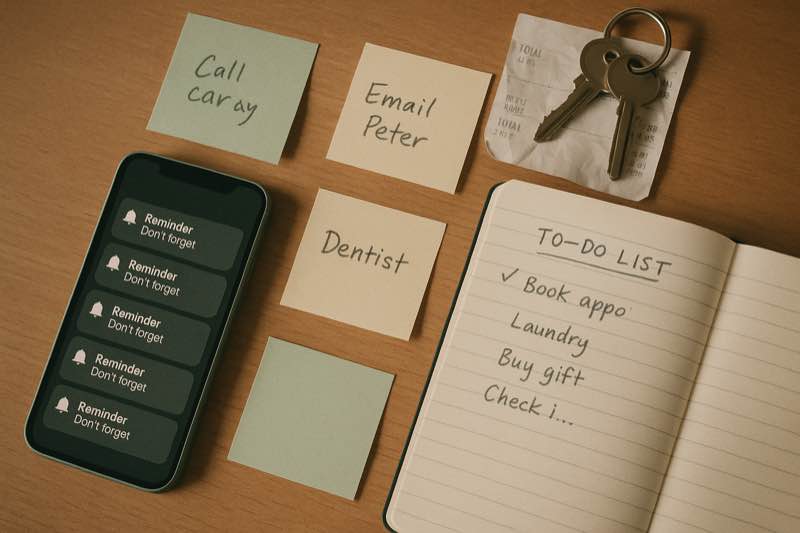Adult ADHD symptoms often appear as internal restlessness, chronic lateness, and executive function challenges rather than obvious hyperactivity. These persistent patterns of inattention and impulsivity significantly impact work, relationships, and daily functioning, requiring comprehensive evaluation for accurate diagnosis.
Adult ADHD doesn't look like the restless child bouncing in a classroom chair. Instead, it shows up as mental restlessness, time blindness, and invisible struggles with organization and follow,through. These patterns can persist for years before anyone recognizes them as ADHD symptoms.
Most adults with ADHD weren't diagnosed as children. They learned to mask symptoms, found workarounds, or blamed themselves for struggling. The hyperactive 8,year,old becomes the adult who feels internally restless but appears calm on the surface.
You can start with a comprehensive self-assessment to organize your thoughts before meeting a professional.

Why Adult ADHD Looks Nothing Like What You Expect
Most adults with ADHD weren't diagnosed as children. They learned to mask symptoms, found workarounds, or blamed themselves for struggling. The hyperactive 8,year,old becomes the adult who feels internally restless but appears calm on the surface.
Internal vs. External Symptoms
The Three Core Patterns of Adult ADHD
Adult ADHD symptoms cluster into three main presentations, though many people show a combination of all three.
1. Predominantly Inattentive Type
Inattentive ADHD Signs in Daily Life
Difficulty Sustaining Attention
Struggling to focus during meetings, reading, or conversations despite wanting to pay attention.
Frequent Mental Distractions
Mind wandering even during important tasks, losing track of what someone just said.
Task Completion Challenges
Starting projects enthusiastically but struggling to finish them, especially boring or routine tasks.
Organization Difficulties
Messy living or work spaces, trouble keeping track of belongings, missed appointments.
2. Predominantly Hyperactive,Impulsive Type
| Option | Description |
|---|---|
| Internal Restlessness | Feeling driven by a motor, difficulty relaxing, always needing to be doing something |
| Impulsive Decision Making | Making big purchases without planning, quitting jobs suddenly, changing plans frequently |
| Interrupting Others | Difficulty waiting turns in conversation, blurting out answers, finishing other people's sentences |
| Impatience | Difficulty waiting in lines, getting frustrated with slow processes, rushing through tasks |
| Risk,Taking Behaviors | Driving too fast, taking unnecessary risks, engaging in impulsive activities |
| Emotional Impulsivity | Quick to anger or frustration, emotional reactions that seem disproportionate to the situation |
3. Combined Presentation
Most adults with ADHD have the combined type, showing significant symptoms from both inattentive and hyperactive,impulsive categories.

Executive Function: The Hidden Core of Adult ADHD
While hyperactivity and inattention get the most attention, executive function difficulties are often the most disabling aspect of adult ADHD.
ADHD vs. Anxiety vs. Executive Dysfunction
Adult ADHD shares symptoms with other conditions, making diagnosis complex. Here's how to tell the difference:
You can start with a comprehensive self-assessment to organize your thoughts before meeting a professional.
How ADHD Impacts Daily Adult Life
Work and Career
Common Workplace Challenges
Meeting Difficulties
Trouble focusing during long meetings, forgetting key points, appearing distracted or disengaged.
Deadline Management
Procrastinating until the last minute, underestimating time needed, missing important deadlines.
Email and Communication
Forgetting to respond to emails, losing track of important messages, difficulty with written communication.
Project Follow,Through
Starting projects with enthusiasm but struggling to complete them, getting distracted by new priorities.
Relationships and Social Life
| Option | Description |
|---|---|
| Listening Challenges | Appearing to not listen even when trying, missing important details in conversations |
| Time Management | Chronic lateness to social events, underestimating travel time, double,booking commitments |
| Emotional Regulation | Rejection sensitivity, quick emotional reactions, difficulty managing frustration |
| Follow,Through | Forgetting to return calls or texts, not following through on social commitments |
| Household Management | Difficulty keeping shared spaces organized, forgetting household responsibilities |
| Financial Management | Impulsive spending, forgetting to pay bills, difficulty budgeting and financial planning |
When to Seek Professional Evaluation
Consider seeking a professional ADHD evaluation if you experience:
Signs It's Time for Professional Assessment
Persistent Patterns
Symptoms persist across different life stages and situations, not just during stressful periods.
Multiple Setting Impact
Difficulties occur at work, home, and in relationships,not just in one area of life.
Childhood History
Looking back, you can identify similar patterns in childhood, even if they weren't recognized as ADHD.
Functional Impairment
Symptoms significantly interfere with your ability to work, maintain relationships, or manage daily responsibilities.
Other Treatments Haven't Helped
You've tried organizational systems, therapy for anxiety/depression, but core attention and executive function issues remain.
Getting Started: Your Next Steps
If you recognize these patterns in yourself, here's how to move forward:
1. Take a Screening Assessment
Start with a validated screening tool like our free ADHD test. While not diagnostic, it can help you organize your thoughts and decide whether professional evaluation is worth pursuing.
2. Gather Information
| Option | Description |
|---|---|
| Childhood History | School report cards, family memories, any early signs of attention or behavior issues |
| Current Symptoms | Keep a brief log of daily challenges, missed deadlines, organizational difficulties |
| Impact Documentation | Performance reviews, relationship feedback, examples of how symptoms affect your life |
| Medical History | Other conditions, medications, family history of ADHD or learning differences |
3. Find a Qualified Professional
Look for: , Psychiatrists or psychologists with ADHD expertise , Professionals who use comprehensive evaluation methods , Providers who consider other conditions that might explain symptoms
You can start with a comprehensive self-assessment to organize your thoughts before meeting a professional.
The Strengths Side of Adult ADHD
While focusing on challenges is important for diagnosis, many adults with ADHD also experience strengths that come with their neurotype:
| Option | Description |
|---|---|
| Creativity and Innovation | Thinking outside the box, making unique connections, innovative problem,solving |
| Hyperfocus Ability | Intense concentration on engaging tasks, ability to work for hours on interesting projects |
| Adaptability | Comfort with change, ability to pivot quickly, thriving in dynamic environments |
| High Energy | Enthusiasm for new projects, ability to juggle multiple interests, natural intensity |
| Entrepreneurial Spirit | Risk,taking, quick decision,making, ability to see opportunities others miss |
| Empathy and Intuition | Strong emotional sensitivity, ability to read between the lines, connecting with others |
Key Takeaways
Adult ADHD is far more complex and nuanced than childhood presentations. The key is recognizing that these aren't character flaws or lack of willpower,they're neurological differences that respond well to proper understanding and support.
If you see yourself in these descriptions, remember:
, You're not broken or lazy,your brain works differently , Help is available,with proper diagnosis and treatment, most adults see significant improvement , Start with small steps,even taking a screening assessment is progress
The journey to understanding your brain starts with honest self,reflection and professional guidance. Take our free ADHD test as your first step toward clarity and support.
This article is for educational purposes only and does not replace professional medical advice. If you think you might have ADHD, consult with a qualified healthcare provider for proper evaluation and treatment.
